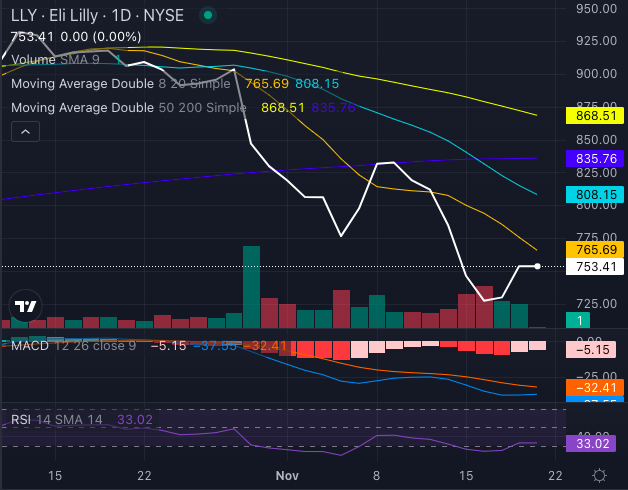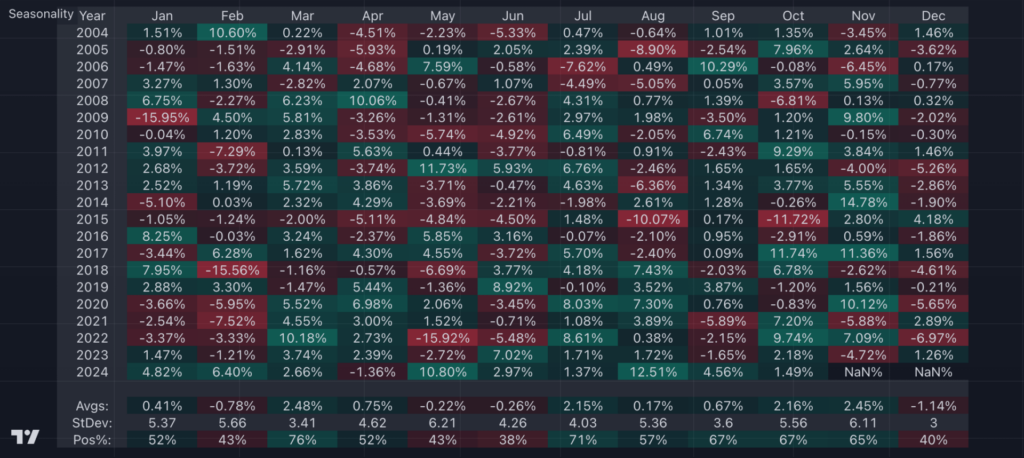Deep in the heart of Zimbabwe, a grueling test has been taking place – a showdown between a band of self-custodial Lightning wallets. The stakes are high. Whoever emerges victorious will be equipped to thrive, but none of the contenders are African-developed; opportunities to soar are rare. The lightning network, while revolutionary, presents a steep learning curve. Creating mobile apps that run a node of the network is complex. Be that as it may, this test seeks to unearth what works and what does not. The mission? To recommend robust tools for everyday users keen on sending small payments, lest they grow disillusioned with Bitcoin.
A doyenne of Bitcoin education, Anita Posch, is leading the charge; her latest excursion into Lightning wallets extends her expertise beyond borders. She opened her first Lightning channel on the BLW app way back in January 2019. Unfazed by the turbulence, Posch soldiers on, realizing that regular users may lack her tolerance for bugs and hiccups. It’s down to her to advocate only those tools the masses could withstand.
The Latest Roster of Lightning Wallets
In 2023, Breez and Phoenix held sway as the sole self-custody Lightning wallets available. Fast forward to the present, and the landscape has expanded. The recent contenders in the Zimbabwean arena are Blixt, Mutiny, Green, Zeus, and Phoenix. A late entrant, Mutiny, along with the Lightning integration in Blockstream’s Green wallet, added a dash of novelty to the mix. With all wallets in a state of flux, evolution is inevitable. Manual toil was required to acquire Mutiny, while Green’s experimental Greenlight feature had to be unlocked. Surviving—and thriving—in this competitive arena would mean embracing change.
The primary mission was crystal clear: to unearth the most reliable, fast, and user-friendly Bitcoin sending and receiving wallets while scrutinizing the associated costs.
Laying the Groundwork
Prior to venturing into rural Zimbabwe, a crucial prelude unfolded. With the foresight of impending internet signal vagaries, the wallets were set up, and a Lightning payments channel was opened in Harare. A year’s experience in Zimbabwe warned Posch of the perilous waters: even with decent internet speed, the upload and download of small files are fraught with risk. Armed with a friend’s speedier internet courtesy of Liquid, the swiftest yet priciest provider, she braved the setup with download speeds clocking 92.7 Mbps, and an upload speed of 14.6 Mbps.
Birthing a Channel
Conforming to set test protocols, Posch undertook a string of installations, paving the way for a fruitful trial. On the 26th and 27th of December, the wallets were seeded with 100,000 sats ($42 at the prevailing rates) to inaugurate a Lightning channel. Each channel needed two Bitcoin blockchain transactions to be ingrained, linking the channel to the blockchain. The goal was as simple as it was integral: to ascertain the wallets’ ability to facilitate swift and cohesive Bitcoin transactions.
The Economy of Channel Inception: To Bitcoin, Lightning, or Liquid?
Opening a channel unfurled a web of options: using on-chain Bitcoin, transferring Lightning directly from another wallet, or delving into a swap from Liquid. Posch dabbled in them all, conscious of the speed and fees that would mark the initiation of her foray into the wallets.

The On-Chain Odyssey
Sending a Lightning payment to inaugurate a channel was the norm for all wallets but Blixt, which held the on-chain option as its exclusive modus operandi—other than liquidity providers. Untypical of its peers, Blixt mandated a second on-chain transaction, consuming hours for confirmation. This snag rear its head later on, as evening encroached. The anxiously anticipated confirmation finally trickled in, only to be hobbled by a teeming mempool. Stranded with sluggish internet at her hostel and in dire need of speed, Posch was forced to retreat to her friend’s abode to tie up the loose ends.
Lightning and Liquid Convergence
In the case of Green and Zeus, Liquid came to the rescue. A swift swap via Boltz.exchange proved far more cost-effective, especially in the light of high transaction fees at the time. Liquid, a sidechain of Bitcoin, instigated an economical process, albeit laced with a touch of trust. Yet, the perks of its speed, privacy, and lower fees offered respite, casting a favorable light on the alternative.
Inaugural Costs
Comparing network fees, transaction, and service fees delineated the cost to inaugurate a channel. Blixt bore the brunt, as the bitcoin on-chain option ruled the roost.
The Battle of the Bitcoin Wallets: An Epic Showdown
During the volatile times of January 1, 2024, when the skies of Bitcoin were stormy and the ground trembled from the scorching heat, a brave adventurer embarked on a treacherous journey to the kopje, deep in the heart of Africa. Armed with two phones and a fervent desire to test the mettle of various Bitcoin wallets, this intrepid explorer set the stage for an epic face-off.
A Test of Titans
Amidst the unforgiving terrain and unsteady internet signals, the gallant pioneer put the wallets through their paces. Armed with a Google Pixel 4, iPhone 13 Pro, and an iPad Air, this courageous soul delved into the heart of the matter – finding a winning Bitcoin wallet, ready to stand the test of time.
The Pivotal Testing Process
With bated breath and tenacity, our intrepid protagonist initiated a series of tests to gauge the true worth of these Bitcoin wallets. As large ants threatened to disrupt the proceedings, the results bore witness to the inherent strengths and weaknesses of these digital warriors.
Challenges and Triumphs
The arduous journey through the testing process yielded triumph as well as adversity. From swift victories to agonizing defeats, each wallet had its time in the arena, and the results were nothing short of captivating.
The Trial by Fire: Payment Reliability and Speed
As the dust settled, the true heroes of this saga emerged; Phoenix and the Wallet of Satoshi, resolute and unwavering. These wallets, especially the tried-and-true Wallet of Satoshi, displayed a level of reliability one could only dream of in this tumultuous Bitcoin universe. Meanwhile, the lightning-fast Phoenix wallet proved to be the very embodiment of swiftness, deftly handling all payment challenges thrown its way.
The Unyielding Quest for Efficient Payments
The pursuit of minimal fees for transactions led to a surprising twist in the tale. The Green wallet, with its frugal nature, emerged as the paragon of cost-effectiveness. Conversely, Zeus reared its head as the most exorbitant of the lot, demanding a hefty toll for the right to access its power.
Unveiling the Best Self-Custodial Lightning Wallets in 2024
Imagine wandering the untamed digital wilds of the ever-evolving crypto landscape, seeking the perfect self-custodial Lightning wallet. In this brave new world, the likes of Phoenix, Mutiny, Green, Zeus, and Blixt stand as beacons of financial freedom. However, not all who wander are lost, for through rigorous testing and insightful evaluation, we have unearthed vital insights into the workings of these digital wonders.
User-Friendly Features
When it comes to the security and user-friendliness of these wonder wallets, the ease of backup processes, open-source nature, and guidance for top-tier security practices take center stage. Endorsements for wallets like Green and Phoenix are derived from their employment of 12-word seed phrases, striking a delicate balance between security and convenience.
Wallet Backup
A crucial facet is the backup process. Green’s “forced backup” feature shines brightly, promoting high-security measures, while other wallets only offer a call to action. The ability of certain wallets to allow seed phrases to be copied to the device’s clipboard raises eyebrows due to potential security compromises and unsafe user behavior.
Convenience, though alluring, can pose a threat to security, making it imperative for wallets to tread cautiously. While Blixt, Mutiny, and Zeus permit seed copying, Green and Zeus adhere to best security practices by preventing this action.
Cloud Backup Considerations
Delving into cloud backups unveils their double-edged nature, offering convenience but heralding potential security and accessibility perils. Notably, African users may lack the necessary accounts for securing their channels. Each wallet tackles cloud backups differently, with nuances preserved in their distinct features.
App Lock Preferences
Security enhancements via PINs, passwords, or pattern locks fortify wallets, safeguarding them from unwanted access. While Blixt, Mutiny, Green, and Zeus offer these security options, Phoenix’s reliance on biometrics garners attention, with room for future adjustments.
Stand-Alone On-Chain Wallet
The provision of a separate on-chain Bitcoin wallet is a laudable feature, simplifying user experiences. While Blixt, Mutiny, Green, and Zeus rise to the occasion, Phoenix stumbles due to an integrated functionality, tethering it to a distinct identity.
Coin Control and UTXO Management
In an era of ascending transaction fees, the absence of coin control in the tested wallets hinders users’ ability to manage costs effectively. Notably, Green’s desktop version exhibits coin control, yet its mobile counterpart remains devoid of this crucial feature.
Lightning Address Functionality
The offering of a Lightning address akin to an email domain represents a convenient feature, simplifying Lightning payments. Though various wallets dance with uniqueness, the judicious selection of custodial services for Lightning addresses attracts discerning users.
Channel Features
Phoenix’s auto channels emerge as a distinctive winning trait, simplifying channel setup for users. Additionally, fee settings and channel management nuances set each wallet apart, with varying degrees of control offered to users.
Insights from Urban Testing
Upon returning to urban settings, further testing unfolded intriguing tales of wallet performance. Green’s experimental mode stumbled, while Blixt underwent syncing challenges. Zeus, although successful in syncing, grappled with node readiness. These nuances inform our understanding of these wallets’ resilience in different settings.

Overall Rankings for Lightning Self-Custody
From an educational vantage point, the Phoenix and Mutiny wallets stand tall. Phoenix’s seamless channel management and superior speed outshine even the custodial Wallet of Satoshi. Alternatively, Mutiny’s user-friendliness positions it as an ideal entry point for beginners.
Amidst these titans, Green’s comprehensive options, compromised by faulty Lightning payments, warrant caution. As for Blixt and Zeus, their offerings may cater more to advanced users, yet faced setbacks in critical testing scenarios.
Regarding the pursuit of the ideal wallet, it is imperative to introspect and discern the core goals and requisite features for a harmonious digital partnership. To navigate this journey, a trusted online learning program might serve as an invaluable guide.
In Conclusion
The diligent evaluation of self-custodial Lightning wallets in 2024 has bestowed a trove of knowledge. From Phoenix to Mutiny, Green to Zeus and Blixt, these wallets were scrutinized for their performance, reliability, and user-centric design. In this saga, Phoenix reigns supreme, followed by Mutiny as the paragon of user-friendliness.



